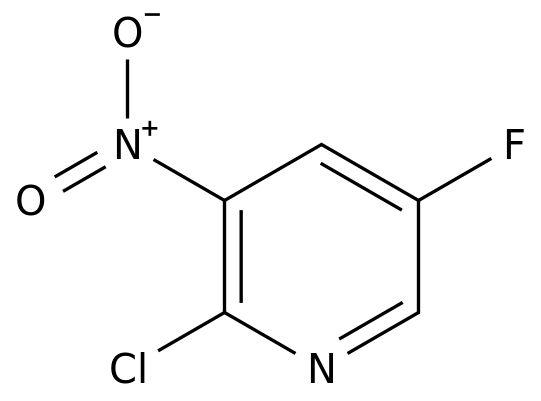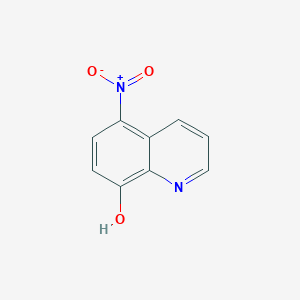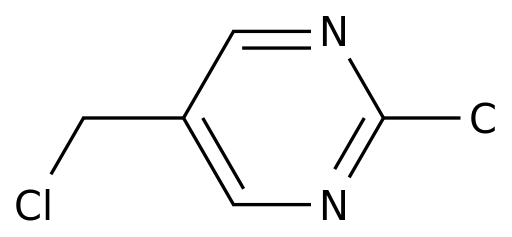-
Categories
-
Pharmaceutical Intermediates
-
Active Pharmaceutical Ingredients
-
Food Additives
- Industrial Coatings
- Agrochemicals
- Dyes and Pigments
- Surfactant
- Flavors and Fragrances
- Chemical Reagents
- Catalyst and Auxiliary
- Natural Products
- Inorganic Chemistry
-
Organic Chemistry
-
Biochemical Engineering
- Analytical Chemistry
- Cosmetic Ingredient
-
Pharmaceutical Intermediates
Promotion
ECHEMI Mall
Wholesale
Weekly Price
Exhibition
News
-
Trade Service
Today is the second anniversary of the National Health Insurance Administration' listing.
two years ago today, in Beijing's West City, The North Street, the National Health Insurance Administration officially listed office. In the two years since then, a series of policies, such as health insurance fund supervision, volume purchase, health insurance catalog adjustment, AND DRG payment, have been studied, formulated and rolled out here, which has brought about great changes to the health care industry. As the regulator of the health care board, become the industry's most dazzling innovator, to the future of health care brought incremental and imagination.
artery network through the combing of 50 heavy policies and interviews with industry people, found that the National Health Insurance Administration reform such a path: the Health Insurance Administration in the health care fund after doing a good job of "open source savings" of the regulatory work, will be the role of the payer to pry the change of medical service model. In the future, while establishing a multi-level guaranteed medical payment system, an innovative medical service system will be established.
path, the greater logic lies in the fact that policy and its characterization power, not just coercion and blocking, are also productive. It produces new words, new types, new objects, it constitutes new practice and new ecology.
back in 2014, a report published by Huazhong University of Science and Technology and People's Press predicted that by 2024, "the health insurance fund will face a deficit of 735.3 billion yuan." "
this forecast has some basis, the annual increase in health care spending touched people's hearts.
in 2014, health insurance revenue of 968.7 billion yuan, spending 813.4 billion yuan, in the following years, health care pressure increased. By 2018, health-care spending will grow by 22.08 percent and health-care revenue will grow by 17.61 percent. The two curves intersected, and for the first time, health-care spending grew faster than health-care revenue growth.. If future growth trends are calculated using 2018 health-care data (income and expense data, income growth, and spending growth) as constants, then health-care spending will exceed Health Care Income by 2023, and health-care funding will begin to run.
health care is a matter of national economy and people's livelihood, about the people's yearning for a better life, who do not want to see the two curves after the intersection of the reverse operation, who do not want to see such a situation.
in the previous system, the regulation of health-care funds was spread across four departments. The medical insurance of urban workers and urban residents shall be administered by the Ministry of Human Resources and Social Welfare, the new agricultural joint shall be managed by the Health and Welfare Commission, medical assistance shall be managed by the Ministry of Civil Affairs, and medical services and drug prices shall be managed by the National Development and Reform Commission. To truly integrate these functions and create new management departments, we must integrate these functions. This integration, not only to make the health care fund fully managed and regulated, but also through the status of super-payer to do to promote industry change and a series of things.
concentrates power so that it can really do great things.
moreover, as health reform enters deepwater, it needs to find a stronger fulcrum and focus to reach deeper reforms.
in this context, the National Health Insurance Administration was born. In March 2018, the State Council's institutional reform, the top-level design was introduced, and in May, the State Health Insurance Administration officially opened its office. what will it do
the new National Health Care Administration?
early July 2018, the film "I'm Not a Drug God" was released, and since its release, the public has been enthusiastic, with discussions about the high price of drugs and other issues that have been hot and headlined. The National Health Insurance Administration may have taken the opportunity of public opinion (the United Nations Home health and sanitation commission) issued its first heavy-duty policy since its establishment, "On the implementation of anti-cancer drugs provincial special centralized procurement of the notice."
, of course, perhaps just in response to public opinion may have nothing to do with the two. This is often the case in this world, things are related to each other and separate dissocity, and it is difficult for you to tell the difference between two things.
began with a concentrated procurement of cancer drugs, the health care bureau began a wave of comprehensive reform.
According to the official website of the National Health Insurance Administration "government documents" column of public data, arterial network through statistics and classification, get a lot of inspiration: . In the two years since the listing, the National Health Insurance Administration has issued 50 policies independently or jointly with other departments. Article 13 is a government matter and work notice, such as the Notice on Strengthening the Construction of the Health Care System, the List of Administrative Law Enforcement Matters of the State Medical Security Administration (2020 Edition), etc.
other 37 heavyweight policies, in addition to government matters and work notices, have brought about far-reaching and dramatic changes to the industry.. There are nine policies in the area of drug collection. The purpose of centralized drug procurement is to explore and improve the mechanism of centralized drug procurement and market-led drug price formation, reduce the burden of drug costs of the masses, standardize the order of drug circulation, and improve the safety of drug use by the masses. The State Health Insurance Administration combines payment, supervision and pricing power in one place, through the "4 plus 7" pilot program, intended to explore the drug price formation mechanism.
from the current situation, the drug centralized procurement policy has brought significant results. The initial 31 pilot varieties were selected in 25, with the median drug price dropping by an average of 52% and a maximum reduction of 96% compared with the lowest purchase price of the same drug in the pilot city in 2017.
According to the 2019 Medical Security Development Statistics Express (hereinafter referred to as "Statistical Express") published by the State Administration of Health Insurance, by the end of 2019, 31 provinces (regions and cities) nationwide had a preliminary preliminary count of 991.3 billion yuan for online orders through provincial drug centralized procurement platforms. Among them, western medicine (chemicals and biological products) orders amounted to 811.5 billion yuan, and orders for traditional Chinese medicine amounted to 179.8 billion yuan. The amount of orders for medical insurance drugs in online medicine amounted to 832.7 billion yuan, accounting for 84%.
by the end of 2019, the average amount of selected drugs in 25 selected drugs in the pilot areas of "4 plus 7" drug centralized-band procurement was 183%, and the procurement volume of selected drugs accounted for 78% of the purchase volume of generic drugs. After the pilot national expansion, all 25 generic varieties were successfully purchased, the price of the expansion was reduced by an average of 59%, and on the basis of the "4 plus 7" pilot was reduced by 25%.
related to drug collection is the health insurance catalog adjustment, which has five policies. The national health insurance catalog controls 80% of the public hospital sales market, for enterprises, if they do not get into health insurance, will lose the market volume advantage brought by the health insurance catalog, trapped in the fierce market competition. For consumers, more life-saving medicines could be saved if they were included in health insurance.
August 20, 2019, the State Administration of Health Insurance issued a notice on the issuance of the National List of Basic Medical Insurance, Industrial Injury Insurance and Maternity Insurance Drugs, triggering an industry earthquake. This major adjustment of the drug catalog, is the first comprehensive adjustment since the establishment of the National Health Insurance Administration, but also since the first edition of the drug catalog in 2000 on the original catalog varieties of a comprehensive combing, from the last round of medical insurance catalog adjustment only 2 years apart.
from the five policies related to the adjustment of the health insurance catalog, the National Health Insurance Administration wants to make the health care drug catalog dynamicadjustment into normal, in order to invigorate existing medical resources, so that the health insurance fund to play a greater role.
according to the statistics express data, the 2019 edition of the National Health Insurance Drug Catalog, a total of 2709 Western and Traditional Chinese medicine, of which 1370 Western medicine, 1339 Chinese medicine. In addition, 892 Chinese medicine tablets have been included in the national standard.
also has five policies on the regulation of health-care funds. The supervision of the health insurance fund is a top priority of the National Health Insurance Administration, how can the people's life-saving money be illegally taken and wasted. To this end, the National Health Insurance Administration through various efforts, the formation of a nationwide anti-fraud and insurance high-pressure situation, and thus formed the implementation of responsibility, open channels to report complaints, found that the problem from strict, strict, from the fast treatment of a series of working mechanisms. Now, in hospitals, communities and many other places, publicity texts to combat fraud and insurance can be seen.
according to statistics and bulletin sleight of hand, in 2019, the medical insurance departments at all levels inspected a total of 815,000 fixed-point medical institutions on-site, investigated and punished 264,000 medical institutions for illegal and illegal violations, of which 6730 were released from medical insurance agreements, 6638 administrative penalties were handed over to judicial organs;
the State Health Insurance Administration organized a total of 69 inspection teams to carry out nationwide flight inspections, covering 30 provinces and 149 pharmaceutical institutions, and found a total of 2.226 billion yuan in suspected violations of the law.
"all-round well-being" is by no means a slogan. The National Health Insurance Administration has four policies focused on poverty alleviation. After the release of the Three-Year Action Plan for Health Care Poverty Reduction (2018-2020) in 2018, the
continued to issue policies such as "Guidelines on Resolutely Completing the Hard Task of Medical Security to Fight Poverty in Poverty" in 2018. The paper suggests that the inclusion of the poor in basic medical insurance, major illness insurance and medical assistance system coverage is a hard-tasking bottom line indicator.
further strengthen the comprehensive safeguard function of the triple system in the area of poverty alleviation and poverty alleviation. Comprehensively establish a unified medical insurance system for urban and rural residents, stabilize the expectation of inpatient treatment, improve outpatient co-ordination, improve the level of insurance coverage for major diseases, continue to implement the policy of reducing the starting line by 50% and raising the payment ratio by 5 percentage points, and completely abolish the cap line for the poor in the construction of the lika, and continue to tilt the medical assistance guarantee in the deep poverty-stricken areas, further improving the guarantee capacity for medical assistance.
according to statistics and bulletin data, by the end of 2019, the number of people covered by basic medical insurance was 135.436 million, and the coverage of the insurance coverage was stable at more than 95%.
although only two policies are distributed on Internet health care, but the introduction of each policy is equivalent to the Internet healthcare industry to open a new era.
industry generally believes that health care payments are not being made clear, which will largely be the biggest obstacle to the development of the Internet healthcare industry.
for The Internet Medical, an innovative form of medical services that involves complex regulatory issues, the National Health Insurance Administration has adopted a strategy of steadily advancing reforms, from breaking the ice to opening up.
August 30, 2019, the National Health Insurance Administration issued "Guidance on improving the price of "Internet plus" medical services and the policy of payment of health insurance. The policy proposes that online and offline medical services shall be subject to fair price and payment policies, and that the "Internet plus" medical services provided by designated medical institutions shall be the same as those of offline medical services within the scope of medical insurance payment, and that the corresponding public medical institutions shall be included in the scope of payment of medical insurance and paid in accordance with the provisions.
during the outbreak, Internet medical has played a great value, major platforms, physical hospitals have opened online fever clinic, and then expanded to other departments of online consultation. First, to channel the public in the face of the panic in the face of the epidemic, and then guide patients online medical treatment, to avoid offline to the hospital caused by cross-infection, while the patients with chronic patients to resume diagnosis, medication to provide protection.
March 2, 2020, the State Health Insurance Administration and the State Health and Care Commission jointly issued the "Guidance on Promoting the Prevention and Control of the New Crown Pneumonia Epidemic" to develop the "Internet Plus" Health Insurance Service during the Prevention and Control of the New Crown Pneumonia Epidemic, so that the process of integrating Internet diagnostic services into medical insurance payments will be further advanced.
policy covers too many areas, each of which has a profound impact on the industry, and it is not always the case here. In the next part, this paper will combine with an interview with Dr. Liu Weichen, a senior strategic expert in the field of big health, to discuss the reform logic of the National Health Insurance Bureau and the future trend of the evolution of China's medical payment system.
As the pressure on health-care funds increases, the National Health Insurance Administration has taken a series of measures to ensure the smooth and sustainable operation of health-care funds, the above-mentioned 50 policies are mostly around the above-mentioned management objectives. According to Dr. Liu,
, from the policy logic of the establishment, the first initiative or first phase of the National Health Insurance Administration is to "cut costs" and "open source", "saving" refers to reducing the expenditure of health insurance funds;
in the cost of saving money, there are two main levels, one is around the fund supervision, the health insurance fraud fraud to eliminate. In June 2019, the State Health Insurance Administration officially issued the Notice on the Implementation of the "Two Pilots and One Demonstration" work on the Supervision of Health Insurance Funds, and issued a list of pilot cities, actively exploring the goal of improving the supervision and cost-saving of health insurance funds through innovation in fund supervision, fund supervision credit system construction and intelligent monitoring of health insurance. This part of the contribution to the overall cost increases year by year.
in 2018, a total of 1.008 billion yuan of health insurance funds recovered, in 2019, a total of 11.556 billion yuan in the whole year, it can be imagined that the future health insurance fraud prevention efforts will continue to strengthen. However, the recovery of fraudulent health-care funds, for nearly 2 trillion yuan of health-care fund expenditure, the contribution to savings is still very low. the biggest contribution of
to savings falls at the second level, adjusting the payment mechanism of the medical insurance fund and constructing the reform of the compound payment method to promote the transformation of the medical service mode and achieve the goal of saving the cost to a greater degree. This is mainly manifested in two aspects, one is the hospital cost control, mainly through the construction of DRG payment method-based payment method change, to force medical institutions and doctors to change the past project-based excessive medical behavior, to cost control to clinical path-guided norms of medical behavior, the construction of positive incentive mechanism, so that medical institutions and doctors can achieve the goal of controlling the increase of hospital costs through independent behavior.
Second, with the short board of China's public health system exposed by this outbreak, the state will gradually strengthen the role of primary health care institutions in health management, promote the construction of integrated health service system, from the perspective of payment methods, the State Health Insurance Administration will also actively through the reform of payment methods, such as the promotion of medical union, medical community packaging and payment, such as the combination of health care and health care, emphasizing the prevention of preventive behavior before diagnosis and treatment, through the traditional mode of payment to promote the traditional medical care-based.
in the past pay-per-project payment system, there was a lot of over-medical behavior, doctors and medical institutions can only achieve the growth of hospital income through multiple programs. At the same time, the traditional medical insurance reimbursement model mainly focuses on inpatient reimbursement, for example, many patients are not reimbursed, patients can only be reimbursed through the form of hospitalization, which also leads to the waste of medical expenses;







